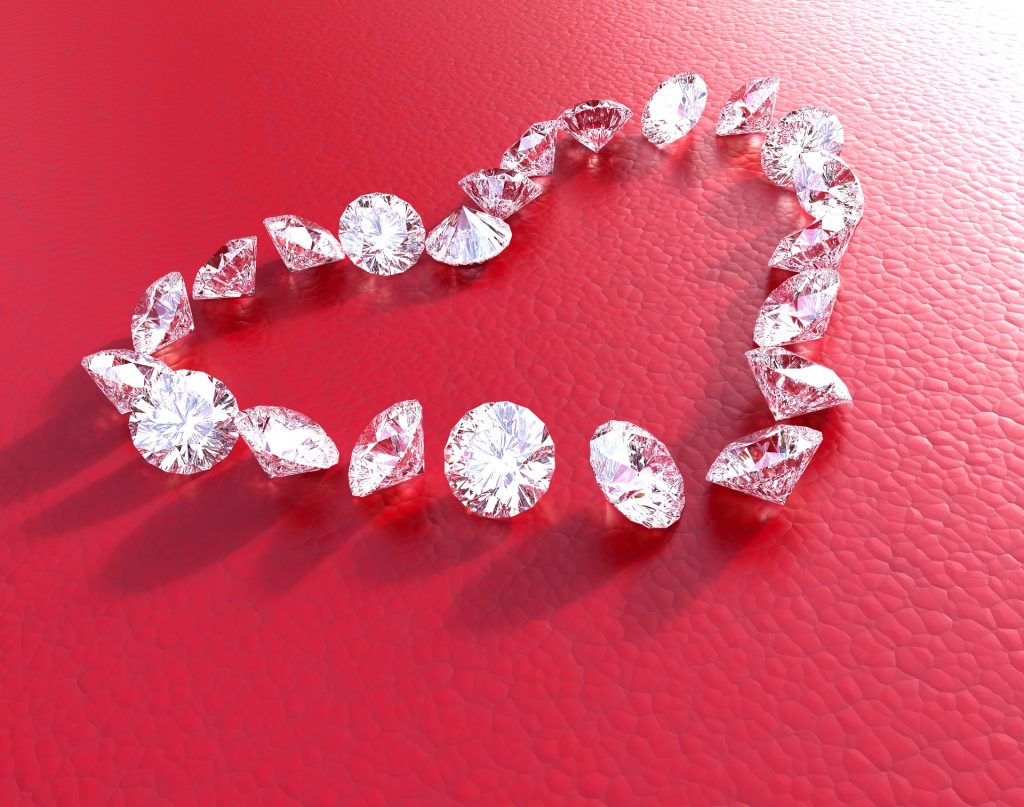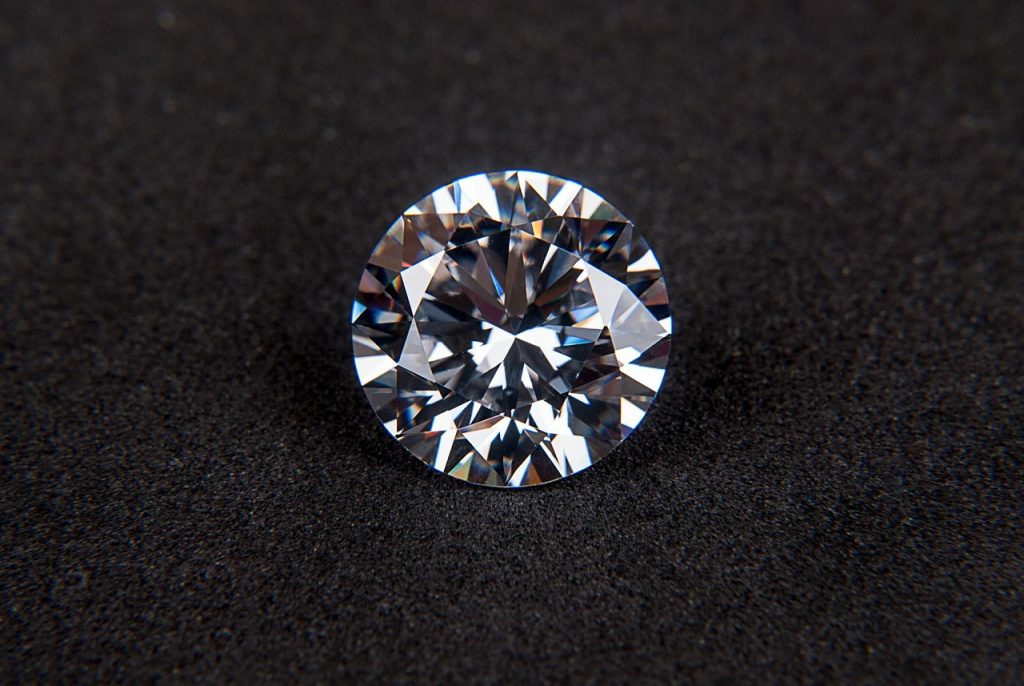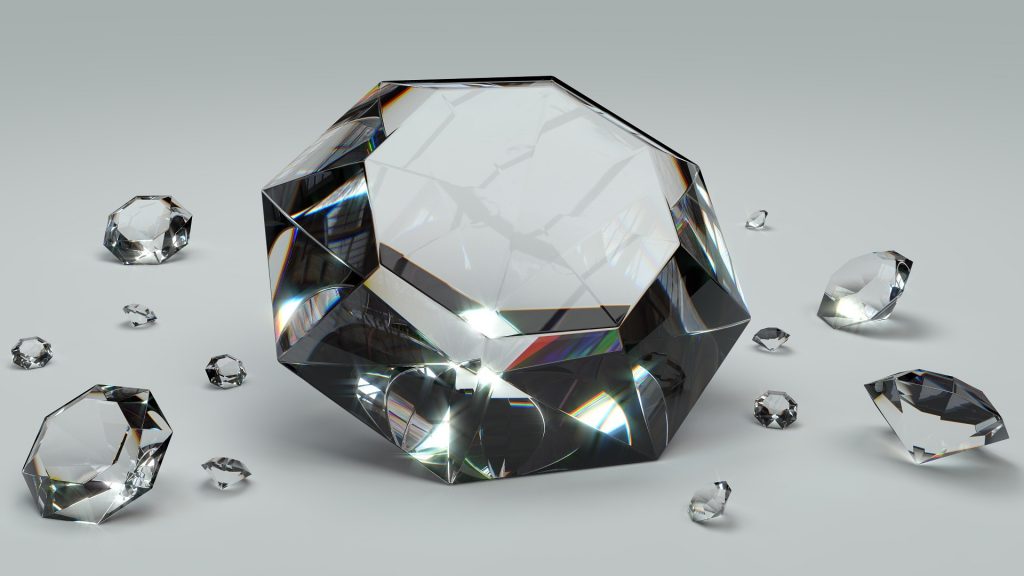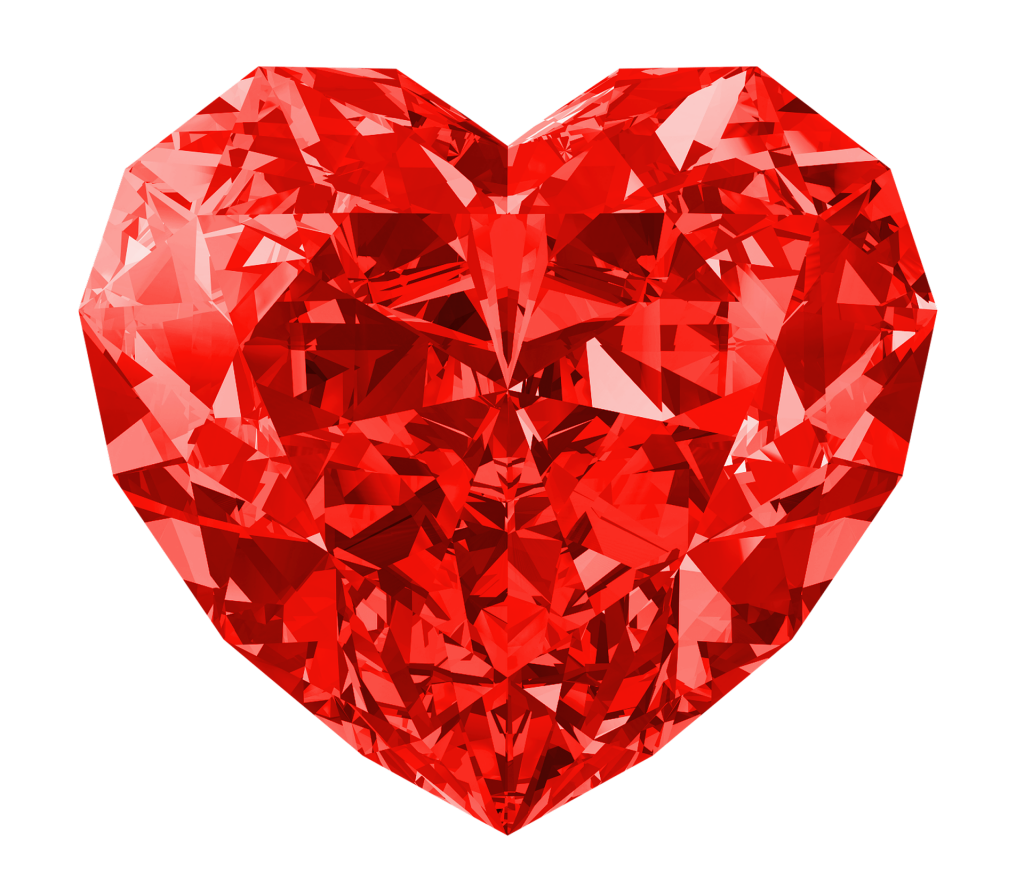
As most experts will tell you, ‘cuts’ and ‘shapes’ do not mean the same thing when comparing diamond types. They cannot be used interchangeably. While the ‘shape’ refers to the outline of the stone, the ‘cut’ refers to the stone’s facets arrangement. Virtually all diamond cuts sold for use in jewelry are one of ten round or fancy diamond shapes. The most common diamond shapes on the market include round, princess, oval, emerald and more.
These diamond ‘shapes’ can be ‘cut’ in a wide range of ways. The most common cut is called a brilliant cut. This brilliant-cut has 57 to 58 facets and consists of a top flat surface, 16 kite‐shaped facets, and 40 triangular-shaped facets.
Knowing the various cuts and shapes used when designing diamonds is the first step to purchasing a piece of jewellery or ordering a custom-made one. Below are more details about the ten most popular cut shapes:
Diamond Shape: Round

- This cut has been around since the 18th century and is one of the most popular diamond shapes.
- Round shaped diamonds are usually superior in quality when compared to the other shapes.
- It looks good as a solitaire in an engagement ring, a pair of earrings, or in a pendant
Diamond Shape: Princess
- This cut was first created in 1980 by Betzalel Ambar and Israel Itzkowitz.
- The princess diamond shape is a fancy design used mostly in engagement rings.
- Its square shape design creates the illusion of a larger diamond.
- This cut is versatile and can suit any style of ring.
Diamond Shape: Oval
- Although it exists since the 1300s, the oval-shaped diamond became popular only in the 1960s. The most famous oval-shaped diamond is the Koh-I-Noor.
- Like all round cuts, this shape is a modified brilliant-cut and has a unique brilliance to it.
- Its elongated shape can make the finger look longer and slimmer as well as create the illusion of greater size.
Diamond Shape: Marquise
- The marquise cut diamond got its name from the mistress of Louis XV of France, Marquise de Pompadour, in 1745. It is said to have resembled her mouth.
- Its football, symmetrical shape has a modified brilliant cut.
- Carat for carat, it has one of the largest surface areas of any diamond shape.
- Additionally, its long and narrow shape makes it seem like it’s even larger than its real size.
Diamond Shape: Pear
- This diamond cut traces its history to the 15th century,
- It looks like a combination of a round and marquise shape and has a tapered point at one end
- In addition to having a unique design, it is also very symmetrical.
- Its teardrop shape is very appealing.
- Tradition dictates that the point should never be directed inwards, but that it needs to point out towards the fingers of the wearer.
Diamond Shape: Emerald
- Although the emerald cut was created specifically to highlight the features of emerald stones, it transfers exceptionally well to diamonds.
- This cut has a cropped octagonal shape with chiseled step cuts and straight linear facets. These facets are usually parallel down the stone.
- Unlike the previous shapes, it does not have the sparkle of a brilliant cut. Instead, its cut produces a hall-of-mirrors effect.
Diamond Shape: Cushion Cut
- Also known as old mine cut diamond, this cut has been around since the mid-1700s. Until the 1900s, this cut was the most popular diamond shape.
- Much like a pillow, the cushion cut diamond has a square cut with rounded corners
- This cut can retain as much diamond weight as possible.
Diamond Shape: Asscher

- It was first designed in 1902 by the Asscher Brothers of Holland
- Similar to the emerald cut, the Asscher is square in shape. But compared to the emerald cut, its step facets are larger, its crown is higher, and its table is smaller.
- This cut has more sparkle than the emerald cut.
- It gained popularity in the early 2000s after modifications were made so it is more brilliant than in the earlier cuts made by the Asscher Brothers.
Diamond Shape: Radiant
- It is a relatively new cut and is the first rectangular cut to have a complete brilliant-cut facet pattern applied to both the crown and pavilion.
- With this design, the right balance was struck between a cushion and a princess cut.
- This cut looks beautiful with both rounded and square cornered diamonds.
Diamond Shape: Heart

- This is the perfect shape to buy for your significant other.
- Its shape symbolizes love and romance and is very popular in solitaire pendants, engagement rings, and promise rings.
- Symmetry is a fundamental characteristic in this shape as the two halves of the heart have to be identical.
